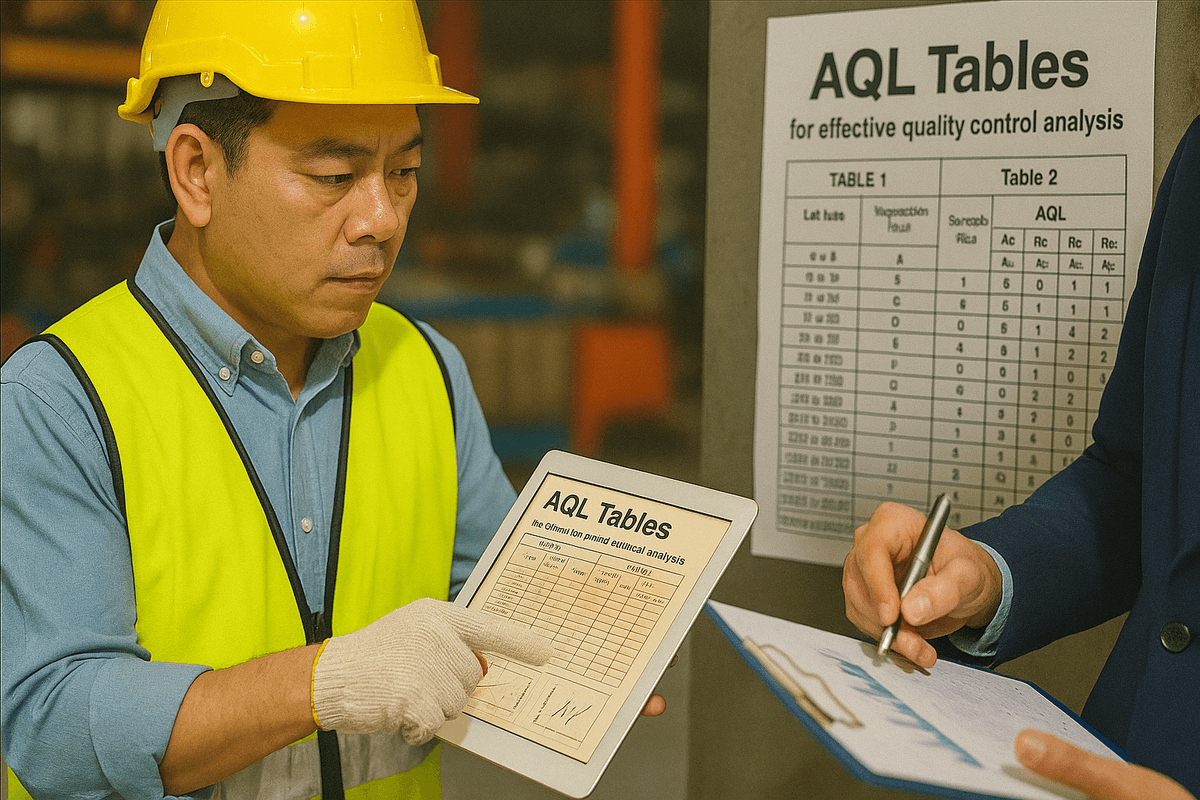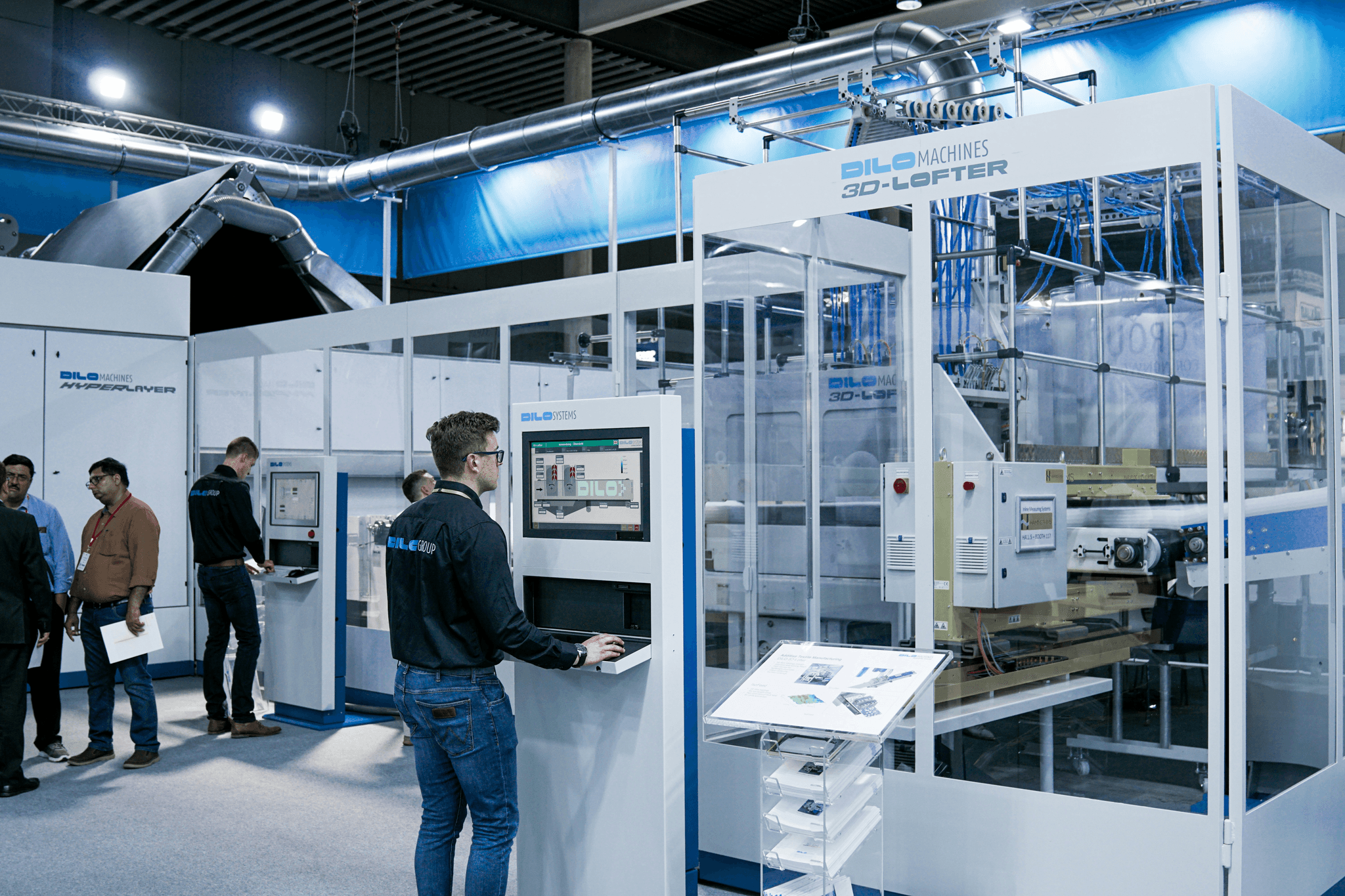Introduction
In the world of quality control, the transition from AQL 1.0 to AQL 4.0 marks a significant leap forward in ensuring product integrity and consistency. This evolution reflects advancements in inspection methodologies and a deeper understanding of consumer expectations, making it essential for businesses to adapt to these new standards. As we explore the intricacies of AQL 4.0, we'll uncover how it reshapes our approach to quality inspection services.
The Evolution from AQL 1.0 to AQL 4.0
The journey from AQL 1.0 to AQL 4.0 has been driven by the need for more precise quality assurance mechanisms, especially as global trade expands and competition intensifies. With each iteration, the acceptance criteria have become more refined, allowing inspectors to better gauge product quality through updated AQL tables and sampling plans tailored for modern manufacturing environments. This evolution is not just about numbers; it's about fostering trust between manufacturers and consumers by ensuring that products meet stringent quality standards.
Essential Concepts Behind AQL Tables
At the heart of effective quality inspections lies a solid understanding of AQL tables, which provide critical data on acceptable quality levels based on sample sizes and defect rates. Within these tables, concepts like AQL level 2 emerge as vital benchmarks that help inspectors determine whether products meet predefined standards or require further scrutiny through various types of inspection methods. Mastering these essential concepts allows businesses to implement robust AQL sampling plans that enhance their overall quality assurance processes.
The Importance of Quality Inspection Services
Quality inspection services play a pivotal role in today’s marketplace by ensuring that products not only comply with regulatory requirements but also align with customer expectations for reliability and safety. Engaging with professional companies like China Inspection Pro can significantly reduce risks associated with manufacturing defects while building lasting trust in global trade relationships through accurate inspections based on contemporary standards like AQL 4.0 and its unique features such as AQL C=0. In an ever-evolving landscape where consumer demand is high, prioritizing effective quality inspections becomes paramount for sustaining business success.
What is AQL 4.0?

AQL 4.0 represents a significant advancement in the realm of quality inspection, refining how businesses define and implement acceptable quality levels (AQL). This version builds upon earlier iterations, enhancing clarity and precision in quality assessments across various industries. With the integration of modern practices, AQL 4.0 ensures that inspectors can effectively evaluate product quality while minimizing risks associated with manufacturing and shipping.
Defining Acceptable Quality Levels
Acceptable Quality Levels (AQL) are critical benchmarks that determine the maximum number of defective items considered acceptable during random sampling inspections. In AQL 4.0, these levels are more clearly defined, allowing for better consistency in evaluations across different types of inspection scenarios. By establishing precise thresholds for defect rates, businesses can ensure their products meet customer expectations while maintaining compliance with industry standards.
Key Differences from Previous Versions
One of the most notable differences in AQL 4.0 compared to its predecessors lies in the enhanced clarity of its guidelines and tables, particularly regarding AQL level 2 specifications. This version also introduces a more comprehensive approach to sampling plans, making it easier for inspectors to select appropriate strategies based on specific product requirements and risk factors. Furthermore, AQL C=0 principles are emphasized more prominently, reinforcing a zero-defect philosophy that encourages manufacturers to strive for excellence.
How AQL 4.0 Benefits Inspectors
Inspectors stand to gain significantly from adopting AQL 4.0 due to its structured framework that simplifies decision-making processes related to quality inspections. The clear definitions and improved sampling plans facilitate more efficient inspections by helping inspectors quickly identify critical defects while ensuring compliance with customer standards and regulations. Additionally, leveraging technology alongside the updated AQL tables allows inspectors to enhance their accuracy and speed—ultimately leading to better outcomes for businesses relying on professional quality inspection services like those offered by China Inspection Pro.
Understanding AQL Tables

Understanding AQL tables is crucial for anyone involved in quality inspection services, particularly with the advancements brought about by AQL 4.0. These tables provide essential guidance on how to determine acceptable quality levels (AQL) during inspections, making them a powerful tool for inspectors. By mastering the AQL table sample size and its implications, businesses can maintain high standards while minimizing risks.
Decoding the AQL Table Sample Size
The sample size in an AQL table is determined based on the total number of units in a lot and is critical for calculating acceptable defect levels. For instance, if you’re dealing with a batch of 10,000 items, understanding how to read the AQL table sample size will help you decide how many items to inspect to ensure quality without overextending resources. In AQL 4.0, this process has been refined to enhance efficiency and accuracy in various types of inspection.
When utilizing an AQL table sample size, it’s essential to recognize that larger lots generally require larger samples for inspection purposes. This ensures that the findings are statistically relevant and reflective of overall product quality. By effectively decoding these tables, inspectors can better align their strategies with industry standards and improve their overall quality inspection service.
Analyzing AQL Levels, Specifically AQL Level 2
AQL levels categorize acceptable defect rates during inspections; one of the most commonly used is AQL Level 2, which balances risk and cost-effectiveness well. This level typically allows for more defects than stricter levels like C=0 but remains stringent enough to ensure product integrity in various industries. Analyzing how AQL Level 2 fits into your sampling plans can significantly impact your inspection outcomes.
When implementing an AQL sampling plan using Level 2 standards, it’s vital to understand what constitutes acceptable limits for defects within your specific context—whether it be consumer electronics or textiles. The flexibility offered by Level 2 makes it easier for businesses to maintain productivity while still upholding necessary quality checks under the framework of AQL 4.0 guidelines. This balance can lead to smoother operations and less friction between production goals and quality assurance.
Moreover, familiarizing yourself with other levels alongside Level 2 enriches your perspective on how different tolerance thresholds affect overall product delivery strategies within your organization or supply chain network.
Practical Uses of AQL Tables in Inspections
A practical understanding of how to use AQL tables effectively enhances decision-making processes during inspections across various sectors—manufacturing being a prime example where precision matters immensely. By applying insights from these tables during routine checks or final inspections before shipment, companies can proactively address any potential issues identified through the established criteria set by their chosen sampling plans like those outlined in AQL 4.0.
Moreover, incorporating tools such as digital platforms or software solutions designed around these principles aids inspectors in quickly referencing appropriate tables when faced with real-time decisions during types of inspections—be they random checks or full-scale audits on production lines or warehouses alike! This streamlining not only saves time but also minimizes human error associated with manual calculations.
Lastly, leveraging insights from case studies demonstrating successful applications of these methods reinforces confidence among teams tasked with maintaining compliance standards while fostering continuous improvement within organizational practices related directly back into enhancing customer satisfaction through reliable product delivery.
AQL Sampling Plans Explained

AQL sampling plans are integral to ensuring that quality inspections are both effective and efficient. These plans help inspectors determine how many units to examine from a batch, based on the acceptable quality levels defined in AQL 4.0. By understanding the various types of inspections and their relevance, professionals can tailor their approach to meet specific quality standards.
Types of Inspection and Their Relevance
When discussing AQL sampling plans, it's crucial to recognize the different types of inspection available, including pre-shipment, during production, and post-production inspections. Each type plays a vital role in maintaining product quality; for instance, pre-shipment inspections allow for the identification of defects before products reach customers. Understanding these inspection types ensures that businesses can implement AQL 4.0 effectively, aligning their processes with industry standards while minimizing risks.
Developing Effective AQL Sampling Plans
Creating an effective AQL sampling plan requires a solid grasp of both the product being inspected and the relevant AQL tables. Inspectors should start by determining the appropriate sample size using an AQL table sample size chart that corresponds to their specific needs and acceptable quality levels like AQL Level 2 or C=0 parameters. By combining this knowledge with practical experience in various types of inspection, companies can develop robust strategies that enhance overall product quality.
Tips for Choosing the Right AQL Plan
Selecting the right AQL plan is essential for achieving reliable results during inspections. Companies should consider factors such as product complexity, production volume, and historical defect rates when choosing an appropriate plan tailored to their needs. Additionally, partnering with experts like China Inspection Pro can provide valuable insights into optimizing your quality inspection service while ensuring compliance with updated standards like those outlined in AQL 4.0.
The Role of AQL C=0

AQL C=0 represents a stringent approach to quality control, emphasizing a zero defect philosophy in inspections. This means that any defect found during the inspection process is unacceptable, pushing organizations to strive for perfection in their products. Implementing AQL C=0 can significantly enhance product quality, ensuring that only flawless items reach customers.
Understanding the Zero Defect Philosophy
The zero defect philosophy under AQL C=0 is rooted in the belief that quality should never be compromised. It encourages manufacturers and inspectors alike to adopt rigorous standards and practices aimed at eliminating defects entirely. By utilizing this philosophy, businesses can foster a culture of continuous improvement and accountability within their teams, ultimately leading to superior product outcomes.
When to Implement AQL C=0
AQL C=0 is particularly beneficial in high-stakes industries where product failure could lead to severe consequences, such as aerospace or medical devices. It's crucial during critical production phases where even minor defects can result in significant safety risks or financial losses. Utilizing AQL sampling plans with a focus on zero defects helps ensure that each item meets the highest standards before reaching consumers.
Comparisons with Other AQL Parameters
When comparing AQL C=0 with other parameters like AQL Level 2, it becomes clear that different contexts dictate different levels of acceptance for defects. While AQL Level 2 might allow for some level of imperfection—typically seen in less critical industries—AQL C=0 maintains an uncompromising stance on quality inspections across all types of inspection processes. This heightened standard not only protects brand reputation but also enhances customer satisfaction by delivering products free from defects.
Key Insights for Successful Inspections

When it comes to achieving success in quality inspections, particularly with AQL 4.0, a few key insights can make all the difference. Understanding the nuances of AQL tables and sampling plans is essential for inspectors aiming to maintain high standards of quality control. Here, we’ll delve into practical tips, the role of technology in inspections, and real-world case studies that highlight effective implementations of AQL 4.0.
Practical Tips for Inspectors Using AQL 4.0
Inspectors utilizing AQL 4.0 should start by familiarizing themselves with the intricacies of the AQL table sample size relevant to their specific context. It's crucial to select appropriate sample sizes in accordance with the products being inspected and the determined acceptable quality levels—especially when dealing with AQL level 2 parameters. Regularly reviewing these tables helps inspectors make informed decisions that can significantly enhance their inspection outcomes.
Moreover, understanding how to implement AQL C=0 can be a game-changer for achieving zero defects in critical components or processes where quality cannot be compromised. This means that any defect discovered during inspection leads to rejection of the entire batch—a strict but sometimes necessary approach in high-stakes industries like aerospace or pharmaceuticals. Inspectors should also document their findings meticulously; clear records not only help track performance but also facilitate continuous improvement within inspection practices.
Finally, collaboration is key! Engaging with other professionals who have experience using AQL 4.0 allows inspectors to share insights and strategies that can lead to better outcomes across various types of inspection scenarios—from random sampling to full inspections based on specific client needs.
Leveraging Technology in Quality Inspections
In today's fast-paced world, leveraging technology is indispensable for enhancing quality inspection services underpinned by principles like those found in AQL 4.0. Digital tools such as mobile applications and cloud-based platforms enable inspectors to access real-time data about product quality and compliance levels directly from the field—making adjustments on-the-fly easier than ever before!
Furthermore, integrating advanced analytics into inspection processes allows for smarter decision-making based on historical data trends derived from previous inspections using various sampling plans and methods outlined by AQL standards such as level 2 criteria or C=0 regulations. This technology not only streamlines operations but also enhances accuracy while reducing human error—an essential factor when striving for optimal outcomes.
Lastly, consider employing automated systems equipped with AI capabilities that can analyze visual defects or inconsistencies at speeds far beyond human capability! These technologies are revolutionizing how we approach inspections by providing deeper insights into product quality while freeing up valuable time for inspectors to focus on complex judgment calls rather than routine checks.
Case Studies on Effective AQL Implementations
To truly appreciate the impact of implementing AQL 4.0 effectively, let’s take a look at some compelling case studies showcasing successful applications across different industries! One notable example involves a leading electronics manufacturer that adopted rigorous adherence to an updated sampling plan aligned with both industry standards and customer expectations underpinned by robust use of an updated aql table sample size methodology.
By shifting towards more stringent acceptance criteria—including adherence to both level 2 parameters and leveraging an innovative approach using technology—they managed not only improved defect detection rates but also reduced returns due solely from quality issues by over thirty percent within six months! This transformation was made possible through careful planning combined with strategic partnerships—such as engaging China Inspection Pro—to ensure comprehensive oversight throughout manufacturing processes.
Another inspiring case comes from a global textile company that embraced zero-defect philosophy through implementing rigorous protocols based around an effective interpretation of both traditional methods alongside modern tools designed specifically around fulfilling requirements set forth by guidelines like those established under aql c=0 regulations! The outcome? They achieved unprecedented levels of customer satisfaction while minimizing waste—a win-win situation!
Challenges in AQL 4.0 Implementation

Implementing AQL 4.0 can be a daunting task for many inspectors, particularly those accustomed to previous versions of the standard. While the advancements in AQL 4.0 offer significant benefits, they also introduce complexities that can lead to misunderstandings and misapplications of the AQL tables and sampling plans. Recognizing these challenges upfront is crucial for ensuring effective quality inspection services.
Common Pitfalls Inspectors Face
One common pitfall inspectors encounter is a lack of familiarity with the new AQL table sample sizes introduced in AQL 4.0, which can lead to incorrect sample selection during inspections. Additionally, some inspectors may struggle with understanding how to apply AQL C=0 effectively, often overlooking its importance in achieving zero defects for critical items. Misinterpretation of AQL levels—particularly AQL Level 2—can also result in inconsistent quality assessments that undermine the integrity of inspection outcomes.
Strategies for Overcoming AQL Challenges
To tackle these challenges head-on, it's essential for inspectors to engage in comprehensive training focused on the nuances of AQL 4.0 and its specific requirements regarding sampling plans and inspection types. Utilizing technology can streamline this process; software tools designed for quality inspection services can help automate calculations related to sample sizes and defect thresholds based on the latest standards. Moreover, collaborating with experienced professionals or organizations like China Inspection Pro can provide valuable insights into best practices and real-world applications of AQL methodologies.
The Importance of Training and Education
Training and education are paramount when it comes to effectively implementing AQL 4.0 standards within an organization’s quality control processes. Regular workshops or online courses focused on updates in acceptable quality levels will ensure that all inspectors are well-versed in using the latest tools, including understanding how to interpret various types of inspection results accurately through updated sampling plans like those found in the new AQL tables. Ultimately, investing time and resources into inspector training not only enhances individual skill sets but also fosters a culture of continuous improvement within organizations committed to maintaining high-quality standards.
Partnering with Inspection Experts

In the world of quality control, partnering with the right inspection experts can make all the difference. This is where China Inspection Pro comes into play, offering a wealth of experience and knowledge in AQL 4.0 standards. Their commitment to delivering top-notch quality inspection services ensures that businesses can confidently navigate the complexities of manufacturing and shipping while maintaining product integrity.
Why Choose China Inspection Pro?
Choosing China Inspection Pro means opting for a professional third-party inspection company that understands the intricacies of AQL sampling plans and tables. With their expertise in various types of inspection, they provide tailored solutions that fit your specific needs, whether you're dealing with AQL level 2 or implementing the stringent AQL C=0 standards. Their team is dedicated to helping you minimize risks and maximize trust in your supply chain.
Benefits of Professional Quality Inspection Services
Engaging professional quality inspection services offers numerous advantages that go beyond mere compliance with AQL 4.0 standards. These services ensure accurate assessments through well-structured AQL table sample sizes and effective sampling plans, which ultimately lead to improved product quality and customer satisfaction. Moreover, by leveraging their advanced technology and expertise, companies can significantly reduce costs associated with defects and returns.
Real-World Success Stories with AQL 4.0
Many businesses have reaped the rewards of implementing AQL 4.0 through successful partnerships with China Inspection Pro. For instance, a leading electronics manufacturer faced challenges related to product defects; after adopting an effective AQL sampling plan tailored by experts, they saw a remarkable reduction in returns due to quality issues—ultimately boosting their brand reputation. Such success stories highlight how understanding and applying concepts like AQL tables and levels can transform operational efficiency while ensuring compliance with industry standards.
Conclusion

In wrapping up our exploration of AQL 4.0, it’s clear that this evolution in quality inspection standards is not just a trend but a necessity for businesses aiming to thrive in competitive markets. The advancements brought by AQL 4.0, including refined AQL tables and enhanced sampling plans, are designed to meet the demands of modern manufacturing and inspection processes. Embracing AQL 4.0 means committing to higher standards of quality assurance that can ultimately lead to greater customer satisfaction and loyalty.
Embracing the Future with AQL 4.0
AQL 4.0 represents a significant leap forward from its predecessors, providing inspectors with more precise tools for evaluating product quality through robust AQL tables and sampling plans tailored to specific needs. The introduction of concepts like AQL C=0 emphasizes a zero-defect philosophy that encourages proactive measures in quality management, ensuring businesses can deliver flawless products consistently. By adopting these modern practices, organizations position themselves as leaders in quality assurance, ready to tackle the challenges of an evolving marketplace.
Building Trust Through Quality Inspections
Trust is the cornerstone of any successful business relationship, and effective quality inspection services play a pivotal role in establishing that trust with customers and partners alike. Utilizing AQL level 2 standards within your inspections ensures that you maintain rigorous criteria for acceptable quality levels while fostering transparency throughout your supply chain processes. Partnering with reliable inspection companies like China Inspection Pro further enhances this trust by providing real-time insights into product quality during manufacturing and shipping phases.
Continuous Improvement in Inspection Practices
The journey towards excellence doesn’t stop at implementing AQL 4.0; it requires ongoing commitment to continuous improvement within your inspection practices as well as regular training on new methodologies like advanced AQL sampling plans or updated interpretations of the AQL table sample size requirements. By routinely evaluating your procedures against industry best practices and leveraging technology for data collection and analysis, you can refine your approach over time effectively. Remember, successful inspections are not just about meeting standards but also about exceeding expectations—making every effort count towards building a culture of quality within your organization.
